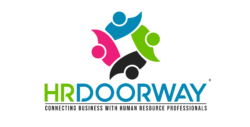How To Ensure Compliance In The Workplace: 9 Tips
1. Documenting policies and procedures is key.
If something is important to the success of your business, then it should be documented in your employee handbook. The idea of documenting policies—especially creating them from scratch—easily overwhelms employers when they try to craft the perfect policy language on the first draft. The fact is, your employee policies and procedures do not have to be sophisticated. The most important aspect is having documentation—establishing the procedures and policies in writing, and then continually tweaking them over time.
As you’re crafting your policies and procedures, consider soliciting input from all levels of your company. Also, keep in mind that you’re creating a living document: Whatever procedures and policies you establish need to be maintained regularly. As things change, you should update your handbook. Any document that sits static will inevitably become outdated and irrelevant.
2. Consistently apply your policies and procedures.
Your policies and procedures should be implemented from the top down, and everyone in your organization should be expected to adhere to them. You won’t get buy-in from your entire team if the rules don’t apply equally to everyone, so don’t let employees who bring in a lot of revenue off the hook—they’ll take everyone else off track. When you deviate from your policies and procedures, you nullify their importance.
To set the expectation for consistency, review your policies regularly with your entire staff throughout the year. Make this part of your culture by incorporating it into recurring meetings and other standing events.
3. Remove barriers to compliance.
Getting staff to take compliance seriously will not happen unless your policies and procedures are easily accessible, so make sure every person on your team has a paper or electronic copy available. Then make sure everyone has time to read it: Allocate some time for them to go through the handbook.
Another way to encourage compliance is to constantly tweak policies or procedures that become outdated (see step #1 above). Keep your policies front of mind and refer to them often.
Finally, reinforce your policies with checklists. If a procedure or a practice requires a certain order of steps, integrating a written checklist into the process helps reinforce the importance of completing the entire process. A termination procedure is a good example of when a checklist is useful, because there are many important steps in the termination process.
4. Reinforce with training.
Reinforce your compliance procedures and policies by making training a regular event. The more familiar your team is with what’s expected of them, the less likely they will be to make those mistakes.
You can also remove the stigma of compliance failure by turning negatives into positives through ongoing employee training. For example, employers have many compliance obligations to provide mandated employment notices by certain deadlines each year. If your company misses one of those deadlines, we suggest:
- Addressing it—don’t brush it under the rug. Send that notice out even though it is late.
- Don’t waste time blaming the department or team that is responsible. Instead, train the team on your procedure and take it one step further; seek input from them on how to prevent the issue from happening again.
When you focus on the positive, you may be surprised to find a new, better solution you had not previously considered.
5. Stay current with ever-changing laws and regulations.
Compliance doesn’t just happen—it requires the organization, specifically its HR functions, to continually and consistently review the current compliance environment; update processes and practices based on new and changing laws as well as industry best practices; implement policy changes when necessary; and see those changes through, which ultimately guarantees compliance.
6. Make sure all employees are following procedures.
Ensuring employees comply with policies and procedures is one of the most difficult aspects of running a business, and unfortunately, policies hold no weight if they’re not followed by everyone. This is especially true when policies change. We find employees are most likely to ignore a change when it impacts an everyday workflow.
The key to getting staff to follow procedures is to involve HR. HR can help implement the changes and make sure processes work smoothly for everyone.
Broadly speaking, getting staff buy-in looks like this:
- First and foremost, communicate company policies and procedures with everyone in the organization in multiple ways.
- Make sure employees understand the “why.” Explain the reasoning behind the change in procedures, policies, or rules.
- Consider a reward system for embracing the changes.
- Offer training as needed around the changes.
7. Schedule compliance audits regularly.
Without testing your systems and processes, you’ll never know if what you’re doing is working. Scheduled compliance audits force your entire organization to make sure its procedures and processes are current and compliant. Furthermore, audits bring to light any gaps or bottlenecks in your compliance plan. We suggest you conduct both announced and unannounced audits at least quarterly for new processes and twice a year otherwise.
8. Use tools and software to help simplify compliance.
The right tools can make compliance easier. Manual data entry, paper copies, and copying and pasting are much more likely to introduce errors than using software designed to handle HR, billing, benefits, and compliance paperwork.
Here are two things I recommend as you look for software:
- Make sure the software you choose is accurate and up-to-date for your locality. For example, if you’re located in Massachusetts, your payroll software should be updated with information about Paid Family & Medical Leave (PFML), so it automatically deducts the accurate amount of taxes per employee.
- Similarly, your software should be reflective of the most current legislation and policies.
At Genesis, our suite of software and tools helps you craft policy language and ensures your systems are changing appropriately as needed. Genesis runs payroll, calculates your team’s benefits, simplifies your paperwork, and more—a one-stop shop to protect your entire business.
9. Our best and final tip: Choose a competent Human Resources Consultant as your partner in compliance.
From a business perspective, it’s easy to be overwhelmed when looking at the compliance task list above. If you’re running every aspect of your HR program on your own, that means it’s up to you to not only keep up with changes, but to implement the changes, monitor their results, and make sure everyone is on board. Truthfully, most small and midsize organizations don’t want to (and shouldn’t have to) allocate personnel to do.
HRDoorway.com offers a simple, up to date compliance resource library for any membership level.

